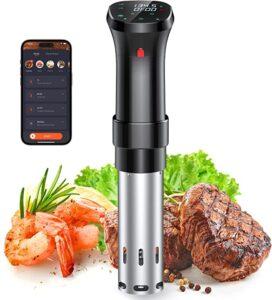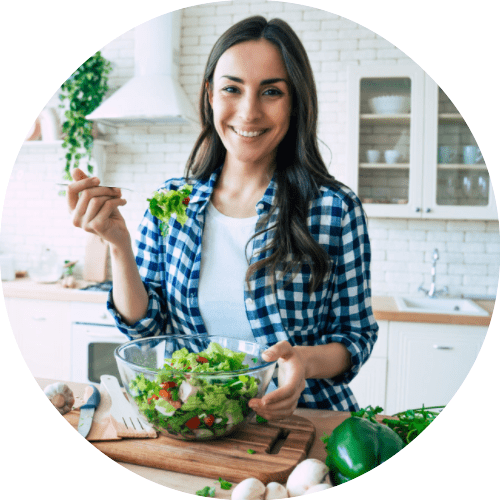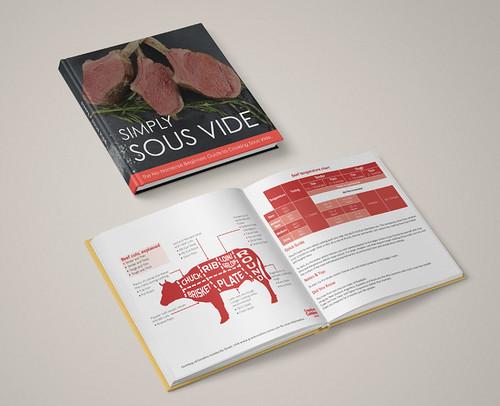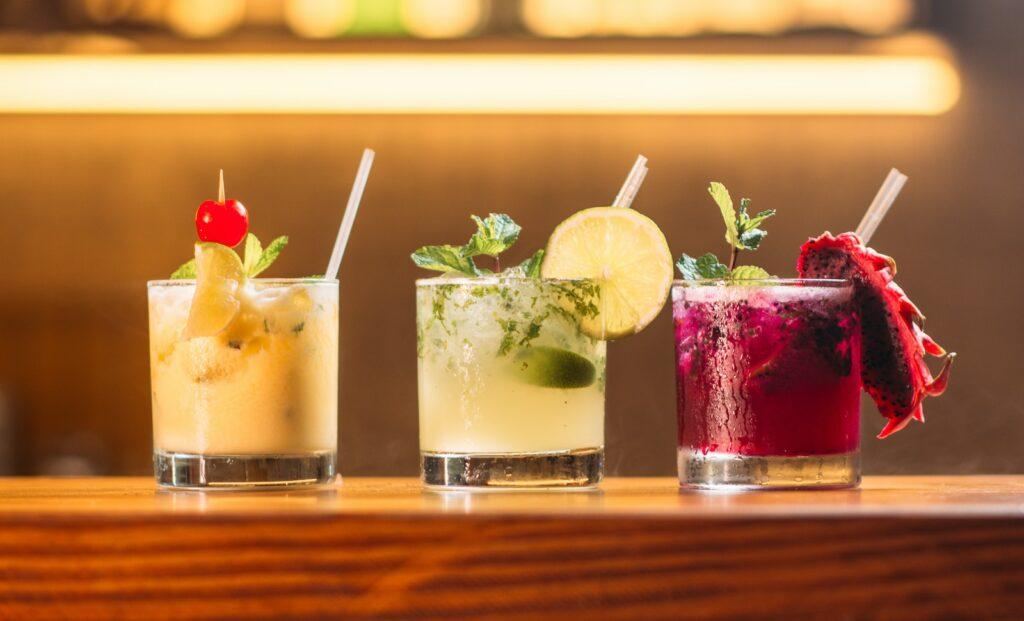Rated & Reviewed is reader-supported. When you buy through links on our site, we may earn an affiliate commission. Learn more.
Sous vide cooking has gained popularity among home chefs and culinary enthusiasts for its ability to deliver perfectly cooked meals with tender and juicy results. By understanding the basics of sous vide and having the right equipment, you can create mouth-watering dishes in the comfort of your own kitchen. In this article, we will explore the essential equipment needed for sous vide cooking and some important safety considerations to keep in mind.
Essential Equipment for Sous Vide Cooking
Before diving into sous vide recipes, it’s important to have the right equipment. Here are two essential items you’ll need:
Vacuum-sealing device
To properly cook food using the sous vide method, you’ll need to vacuum-seal your ingredients in a plastic bag. This ensures that the food is evenly cooked and retains its natural flavors. Investing in a vacuum-sealing device will make this process much easier and more efficient.
Sous vide ball or stick
To maintain a consistent temperature in the water bath during the sous vide cooking process, it’s important to use a sous vide ball or stick. These devices help to circulate the water and provide even heat distribution, allowing your food to cook evenly. They are especially useful when cooking larger cuts of meat or multiple portions.

Safety Considerations for Sous Vide Cooking
While sous vide cooking is a safe and effective method, it’s important to consider proper temperature control and water quality:
Temperature control
One of the key aspects of sous vide cooking is precise temperature control. It’s crucial to ensure that the water bath is set to the correct temperature for the specific recipe you are following. This ensures food safety and optimal cooking results.
Water quality
Using clean and filtered water in your sous vide cooking is essential. Water quality can affect the taste and texture of your food, so it’s important to use water that is free from contaminants. Using filtered water can help improve the overall quality of your sous vide dishes.
In the next sections, we will explore delicious recipes for sous vide, how to prepare ingredients before cooking, the cooking process itself, and some popular cooking techniques. By following these steps, you’ll be able to create gourmet meals that are sure to impress.
Recipes for Sous Vide
Now that we understand the basics of sous vide cooking and have the necessary equipment, it’s time to explore some delicious recipes that can be prepared using this technique. Sous vide cooking allows for precise temperature control, resulting in perfectly cooked and flavorful dishes.
Beef Burger
To start, let’s dive into a classic dish – the beef burger. Sous vide cooking ensures that the patty is cooked evenly throughout, resulting in a juicy and tender burger.
Ingredients:
– 1 pound of ground beef
– Salt and pepper to taste
– Optional toppings: cheese, lettuce, tomato, onion, pickles
1. Preheat the water bath to 130°F (54°C) for a medium-rare burger. Adjust the temperature according to your desired level of doneness.
2. Shape the ground beef into burger patties, ensuring they are uniform in size and thickness.
3. Season both sides of the patties with salt and pepper.
4. Place the seasoned patties in a vacuum-sealed bag or a resealable bag, removing as much air as possible.
5. Submerge the bag in the water bath and cook for 1 to 2 hours.
6. Once cooked, remove the patties from the bag and pat them dry with a paper towel.
7. Heat a skillet or grill over high heat and sear the patties for about 1 minute on each side to achieve a nice crust.
8. Assemble the burger with your favorite toppings and serve.
Sous Vide Salmon Fillet
Salmon is a versatile fish that can benefit greatly from sous vide cooking. This recipe will guide you in preparing a perfectly cooked and flavorful salmon fillet.
Ingredients:
– 1 salmon fillet
– Salt and pepper to taste
– Lemon slices (optional)
– Fresh herbs (such as dill or parsley) for garnish
1. Preheat the water bath to 125°F (52°C) for a medium-rare salmon. Adjust the temperature according to your preference.
2. Season the salmon fillet with salt and pepper. Place a few lemon slices on top for added flavor, if desired.
3. Place the seasoned fillet in a vacuum-sealed bag or a resealable bag, making sure to remove as much air as possible.
4. Submerge the bag in the water bath and cook for 30 to 45 minutes, depending on the thickness of the fillet.
5. Once cooked, remove the fillet from the bag and pat it dry with a paper towel.
6. Heat a skillet or grill pan over medium-high heat and sear the fillet for about 1 minute on each side to achieve a crispy exterior.
7. Garnish with fresh herbs and serve with your favorite side dishes.
Preparing Ingredients Before Sous Vide
Before diving into the sous vide cooking process, it’s important to properly prepare the ingredients for optimal results. Here are a few key steps to follow.
Selecting the Right Cuts of Meat
When it comes to meats, it’s important to choose cuts that benefit from the long, low-temperature cooking method of sous vide. Cuts with more connective tissue, such as beef brisket or short ribs, are excellent choices as they become tender and flavorful when cooked sous vide. However, leaner cuts like filet mignon may not yield the desired texture.
Marinating and Seasoning
Sous vide cooking allows for flavors to penetrate the food more intensely, so marinating and seasoning are essential steps. Before vacuum-sealing the ingredients, consider marinating or seasoning them to enhance the overall taste. This can be done by using your preferred marinades, dry rubs, or aromatic herbs and spices.
The Cooking Process
Now that we have our ingredients prepared, it’s time to dive into the sous vide cooking process. The following steps will guide you through setting the correct temperature, timing, and finally, plunging the food into the water bath.
Setting the Correct Temperature
Temperature control is crucial in sous vide cooking, as it determines the desired level of doneness. Use a sous vide machine or immersion circulator to heat the water bath to the desired temperature. It’s important to refer to a reliable sous vide cooking guide for specific temperatures based on the ingredients you are cooking.
Timing
Sous vide cooking is all about precision, and timing plays a crucial role. Depending on the thickness and desired doneness of the ingredients, the cooking time can vary. It’s recommended to refer to cooking charts or recipes that provide specific cooking times for various ingredients.
Plunging the Food
Once the water bath has reached the desired temperature and the ingredients are properly seasoned and prepared, it’s time to plunge the food into the water bath. Place the vacuum-sealed bags or resealable bags into the water bath, ensuring they are fully submerged. Use a sous vide weight or clip to prevent the bags from floating.
Serving with Sous Vide
After cooking your food using the sous vide technique, it’s important to present it in an appealing and appetizing way. Here are some tips for serving sous vide dishes:
- Presentation: Take the time to arrange your cooked food on a plate or platter in an aesthetically pleasing manner. Consider adding garnishes or colorful ingredients to enhance the visual appeal of the dish.
- Finishing touches: While the sous vide cooking process ensures perfectly cooked and tender food, you may want to add some finishing touches to enhance the flavor and texture. Searing the meat or fish in a hot skillet for a few seconds on each side can create a delicious crust and add an extra depth of flavor. You can also brush the food with a glaze or sauce before serving to add a burst of flavor.
Popular Sous Vide Cooking Techniques
There are various techniques that can be utilized when cooking with sous vide. Here are two popular ones:
- Steeping: Steeping is a technique commonly used with delicate ingredients such as eggs or fruits. By placing the food in a water bath at a lower temperature, usually around 140°F (60°C), it slowly cooks while maintaining its texture and flavor
- Boiling: Boiling is a common method used for meat and vegetables. The food is cooked in a water bath at a higher temperature, typically around 160-180°F (71-82°C). This technique ensures that the food is thoroughly cooked and reaches the desired level of tenderness.
Alternatives to Sous Vide Cooking
If you don’t have access to a sous vide machine or prefer alternative cooking methods, there are other techniques that can achieve similar results:
- Grilling: Grilling is a popular cooking method that can deliver deliciously cooked meat and vegetables. It provides a charred and smoky flavor which is different from the gentle and precise nature of sous vide. However, grilling can still produce juicy and flavorful results.
- Roasting: Roasting in the oven is another alternative to sous vide. By cooking food at a higher temperature, usually around 350-400°F (175-200°C), you can achieve caramelization and a crispy exterior while ensuring the inside is cooked to your desired level of doneness.
Wrapping Up Sous Vide Cooking
Sous vide is a versatile and precise cooking technique that allows you to achieve consistent and delicious results. From perfectly cooked steaks to tender salmon fillets, sous vide unlocks a world of possibilities in the kitchen. By following recipes and experimenting with different ingredients, temperatures, and cooking times, you can master the art of sous vide and impress your family and friends with your culinary skills. Remember to always prioritize safety when cooking sous vide and enjoy the unique flavors and textures this technique can bring to your dishes.
FAQs on Sous Vide Cooking
What is sous vide cooking?
Sous vide cooking is a method in which food is sealed in a bag and cooked in a temperature-controlled water bath, resulting in tender and evenly cooked dishes.
What are the benefits of sous vide cooking?
Sous vide cooking offers several advantages including precise temperature control, moisture retention, enhanced flavor infusion, and convenience for meal preparation.
What equipment do I need for sous vide cooking?
To cook sous vide, you will need a vacuum-sealing device to seal the food, and a sous vide ball or stick to maintain the water temperature in the cooking vessel.
Are there any safety considerations for sous vide cooking?
Temperature control is crucial for sous vide cooking to ensure food safety. Additionally, using high-quality water free from contaminants is important.
Can you provide some popular sous vide recipes?
Sure! We have recipes for beef burgers and sous vide salmon fillets included in this article. Check them out for detailed instructions on how to prepare these dishes using sous vide.
How should I prepare the ingredients before cooking sous vide?
Before cooking sous vide, it is important to select the right cuts of meat and marinate or season them according to your preference. This helps enhance the flavor of the final dish.
What is the cooking process for sous vide?
The cooking process involves setting the correct temperature for the water bath, timing the cooking duration based on the food being cooked, and plunging the sealed food bag into the water bath.
Can you suggest some popular alternatives to sous vide cooking?
If you don’t have the necessary equipment for sous vide cooking, grilling and roasting are popular alternatives that can still yield delicious results.
Amazon and the Amazon logo are trademarks of Amazon.com, Inc, or its affiliates.


